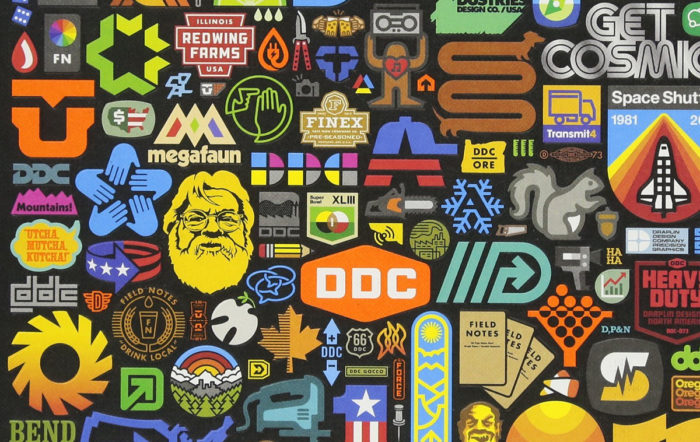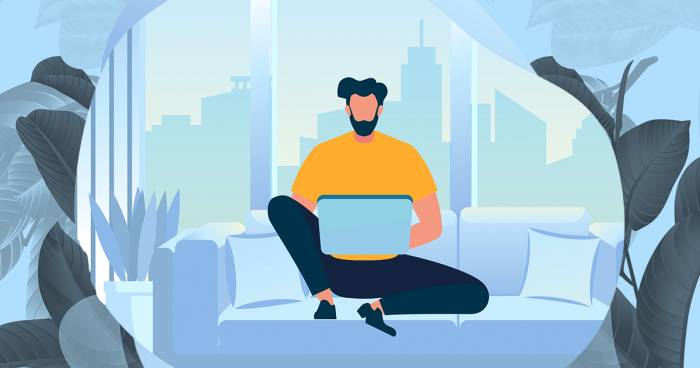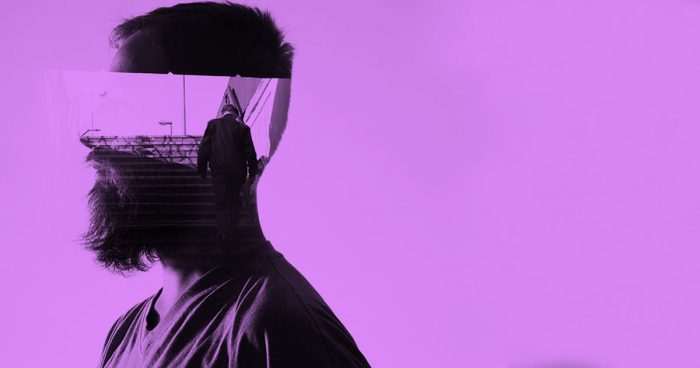If you’re a remote worker, then you probably already know that conferencing on video is a piece of cake. Just find the link, punch in that 87-digit access code, hit share, and you’re good to go—just make sure you talk over everyone else on the call when you join. But have you ever really thought about the image you’re projecting—the backdrop, the composition, the kale salad stuck in your teeth?
If you take remote working seriously, then the video call is an art form to be mastered. After all, for many employees, these conferences mark the only instances of face-time they’ll get with their colleagues.
We talked to Adrienne Breux, the House Tour editor of Apartment Therapy, on how to optimize your remote self. Seems simple, right? You’d be surprised.
The Remote Worker thinks about how they look on other people’s screens.
“The first mistake people make is simply not considering how they appear on screen in the first place. I’ve seen people on conference calls just lying on their bellies on the floor, or slouched down on the couch, or in bed. Even at the most casual company, that’s borderline unprofessional.
And certainly, if you’re talking with clients, you don’t want to be just lounging. You don’t have to sit up stick-straight in a three-piece suit, but do put some thought into your professional appearance.
My favorite tip for accomplishing this? Take a quick screenshot. You can even print it out to get a look at the composition with fresh eyes. Sometimes you just need a change of perspective. We do it a lot in interior design; instead of just looking at a room in person, take a photo and examine the image. You’d be surprised at what you can see… like spotting a bunch of wires tangled in the background, a distracting mess of books, or that your cat’s litter box is in the frame.”
The Remote Worker gets lit.
“Lighting is very important, especially if you’re giving a presentation. Avoid backlighting and make sure the lighting you have is balanced on both sides of your face (so there’s not a shadow on one side). Natural light is best when possible, but if you don’t have a window nearby, use artificial lighting so you don’t leave viewers in the dark!”
The Remote Worker designs what’s on-screen.
“Consider the rectangle you’ll be inside on the screen. What do you want to put in it? You’re a designer, so use this to show you understand composition and the power of negative space. I like to make sure my head is in the middle of the frame and that the camera is pointed at me straight-on. If you’re a designer looking to impress clients, all these little things prove you know what looks good.”
The Remote Worker curates their backdrop.
“Take down all the clutter, sketches, and especially any notes that may have proprietary information about clients. Get rid of the giant iced coffee cup or the stacks of papers and files. Make sure you don’t have any provocative art or book titles in view (unless that’s your brand). Simplify your backdrop so that viewers can focus on you and what you’re saying… not the dirty dishes in your kitchen sink.
But that doesn’t necessarily mean you have to only take your calls in an empty room. I work at a design site, so I don’t want to just have a plain white wall behind me as a background. I want to show off my personality and that I’m a creative, design-minded person, so I’m not afraid to take a call in front of a composition with some art and plants in the background.
Really, decide what kind of vibe you want to give. What do you want people to pay attention to? What do you want their takeaway of you and your home office to be? Bottom line: Declutter what’s not necessary, add a bit of your personality in the frame, and make sure you’re well lit!”
The Remote Worker shows their style, not their hobbies.
“I think the key is that you want to show your personality as a designer, but stay away from showcasing your hobbies. Everything gives an impression. Think of every meeting as an interview with a potential client. So, if your designing style is very minimal and austere, your backdrop should be very clear. If you’re one of those illustrators who have like a very distinctive illustrative style, you can hang some of your work like a portfolio, but it needs to be neat. It should always look like you’re interviewing for a job, because if you work remotely, you kind of are.”
This story is part of our new series on remote working. Like what you’re reading? Check out The 23 Best Tools and Apps for Remote Working!



